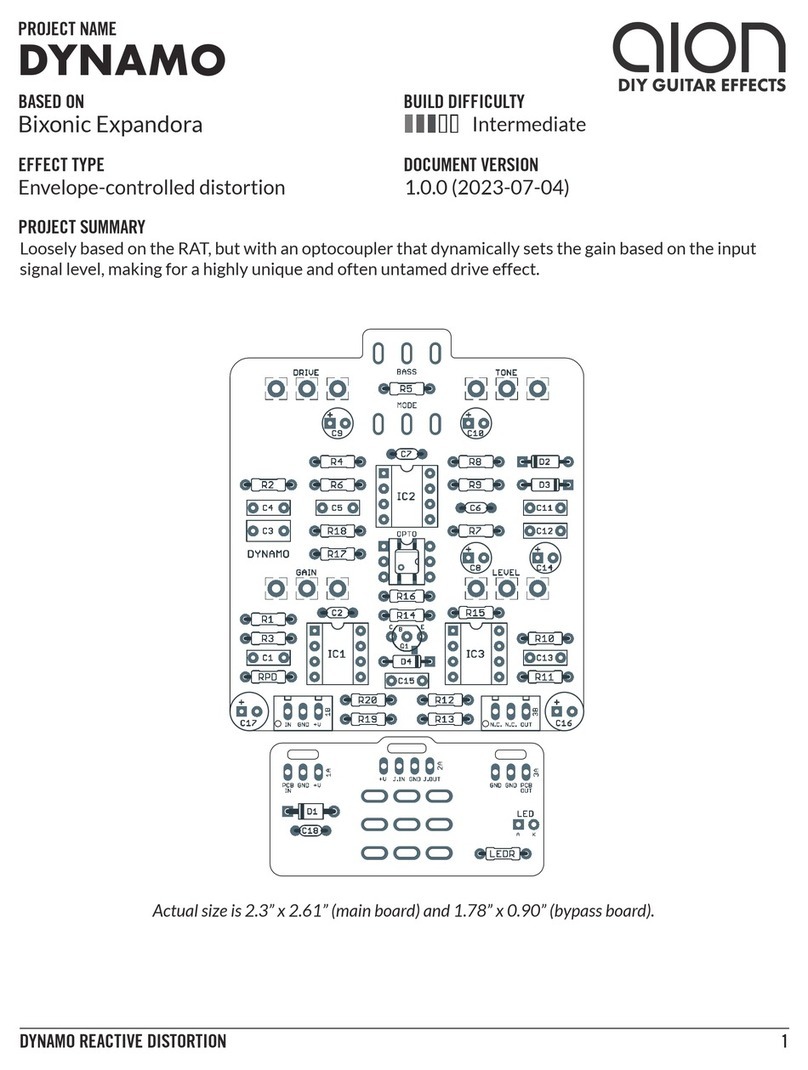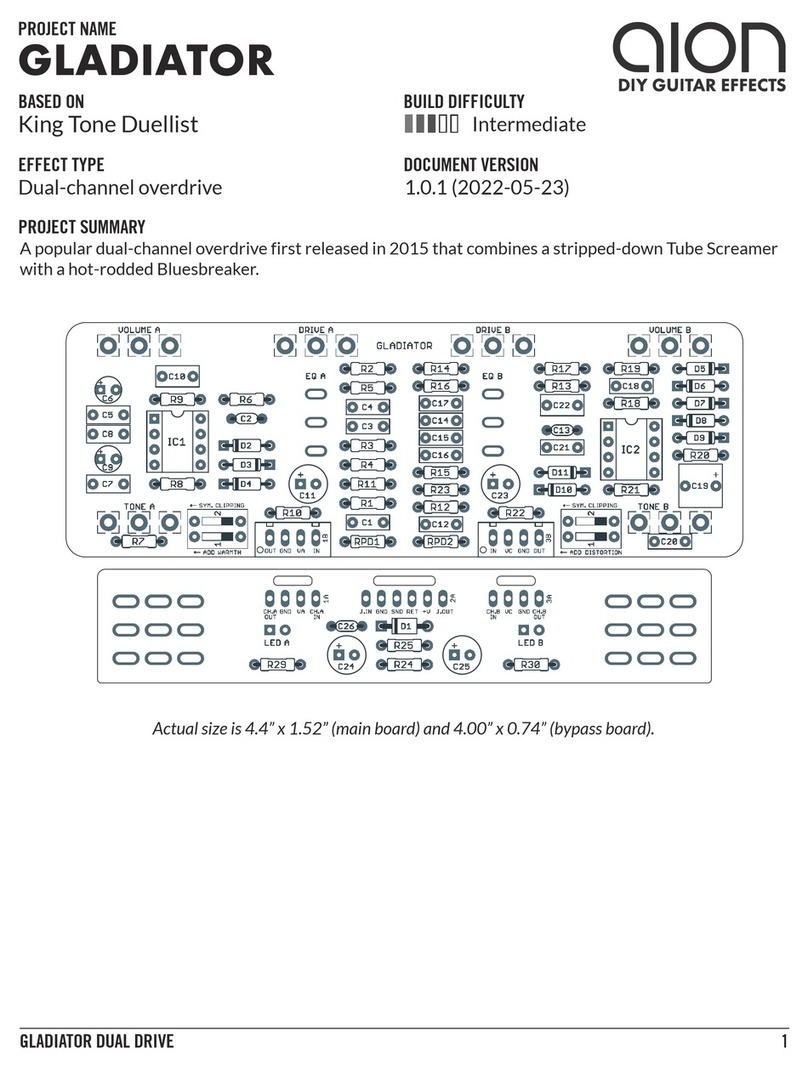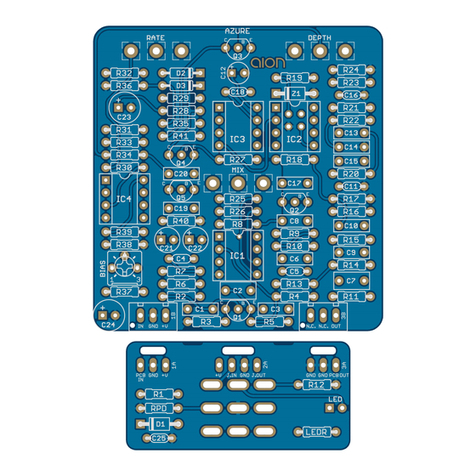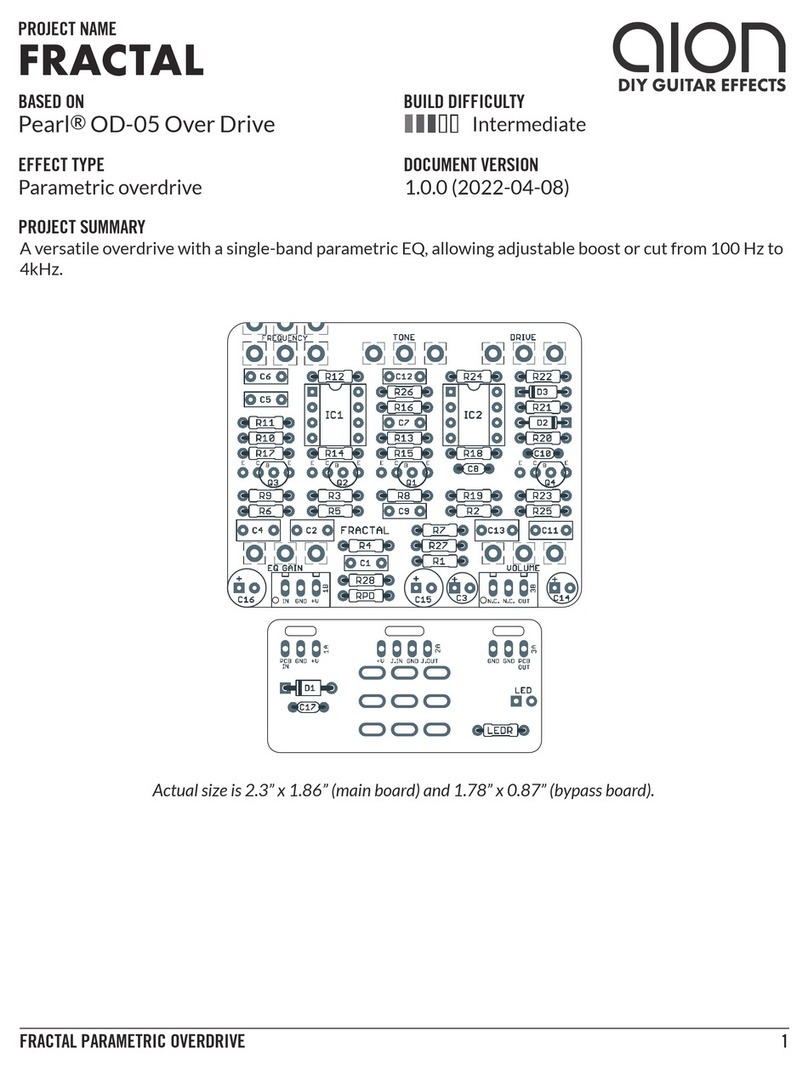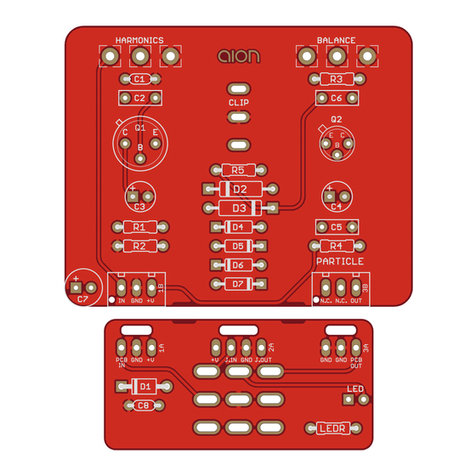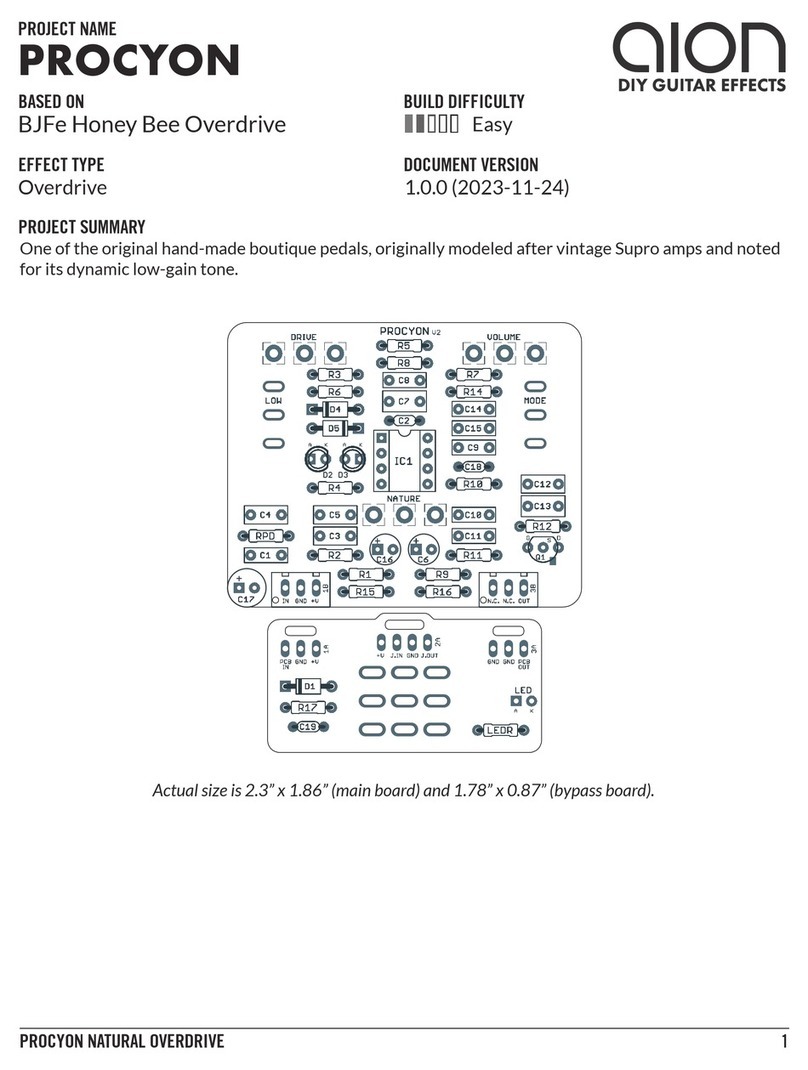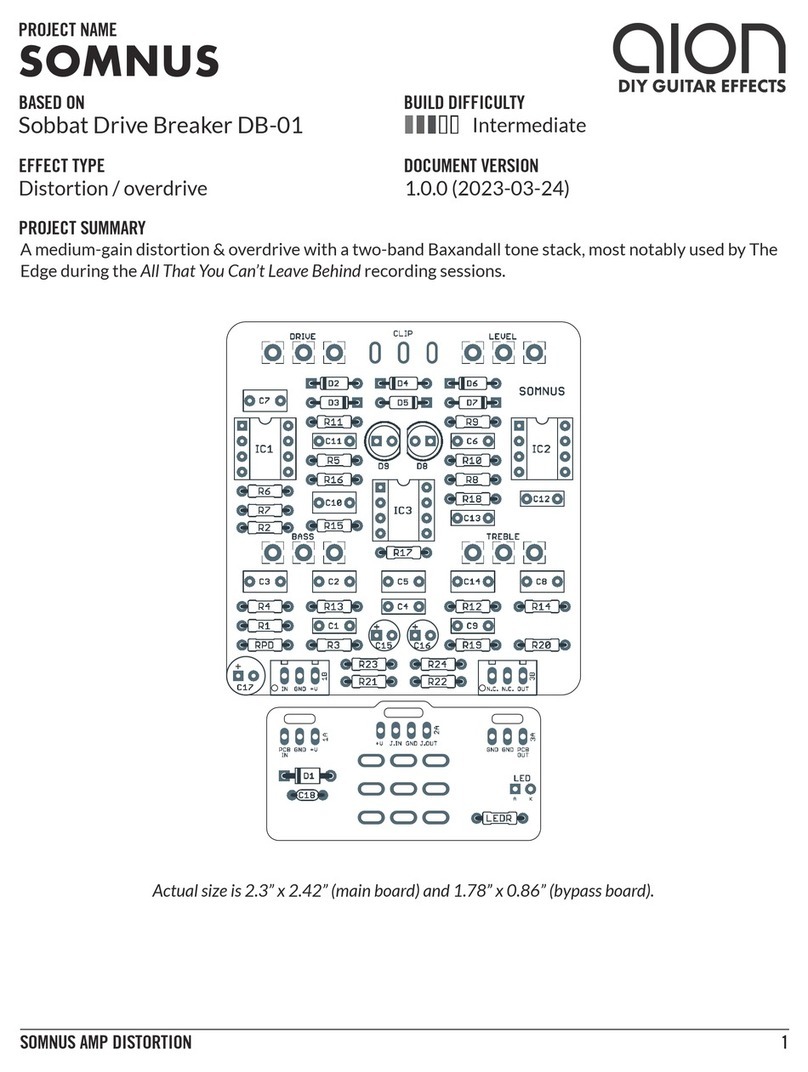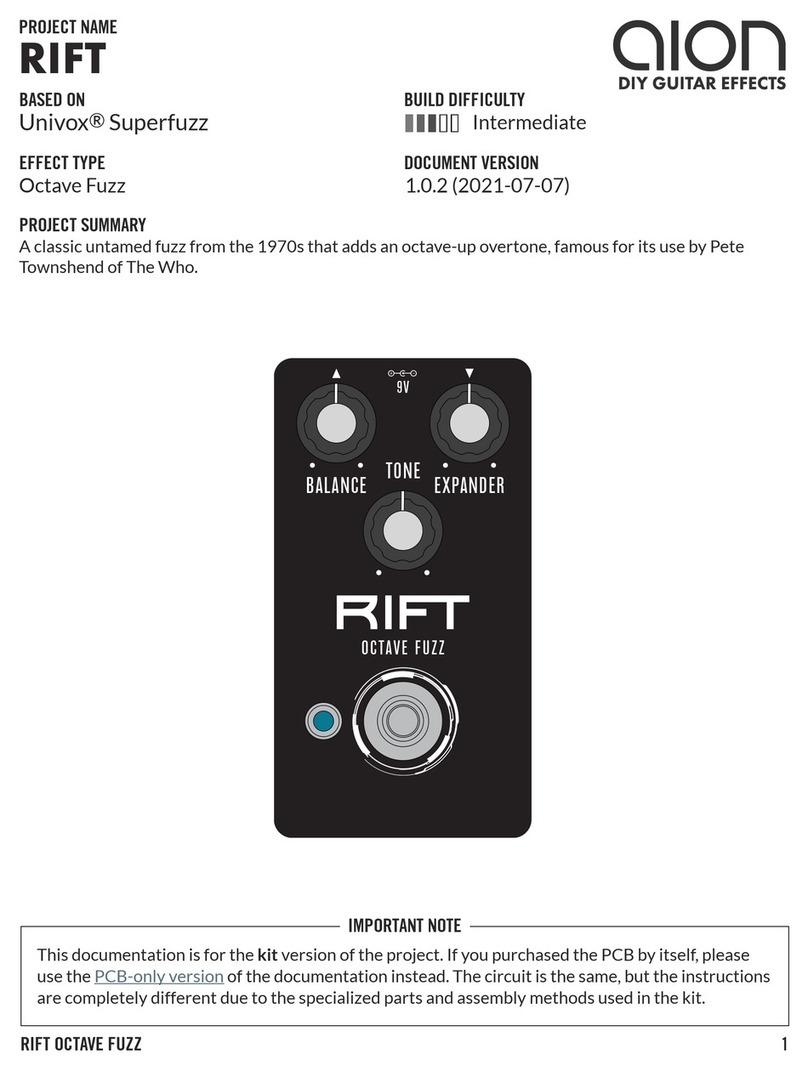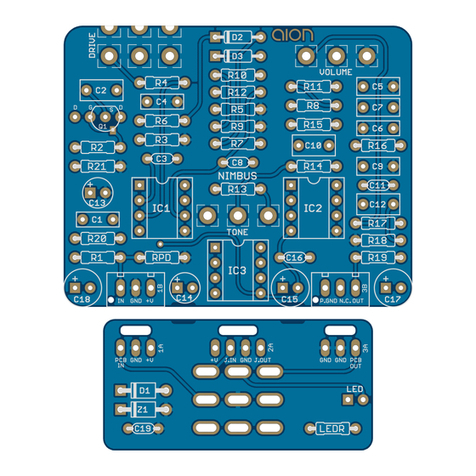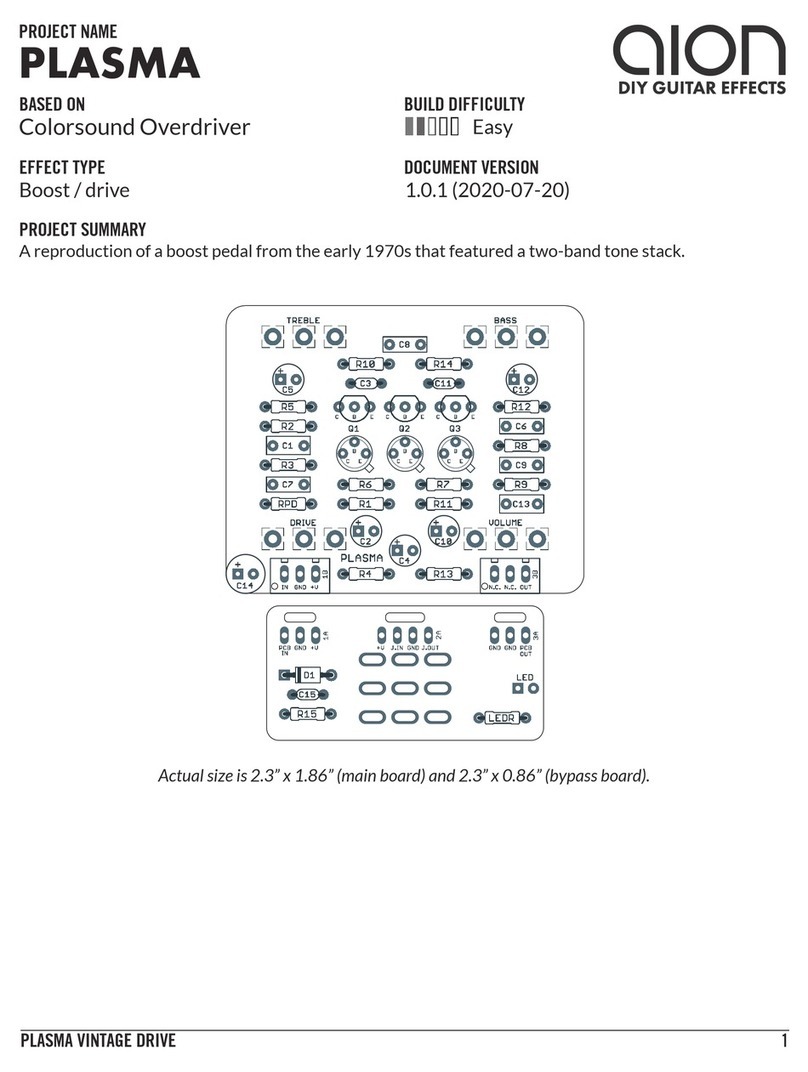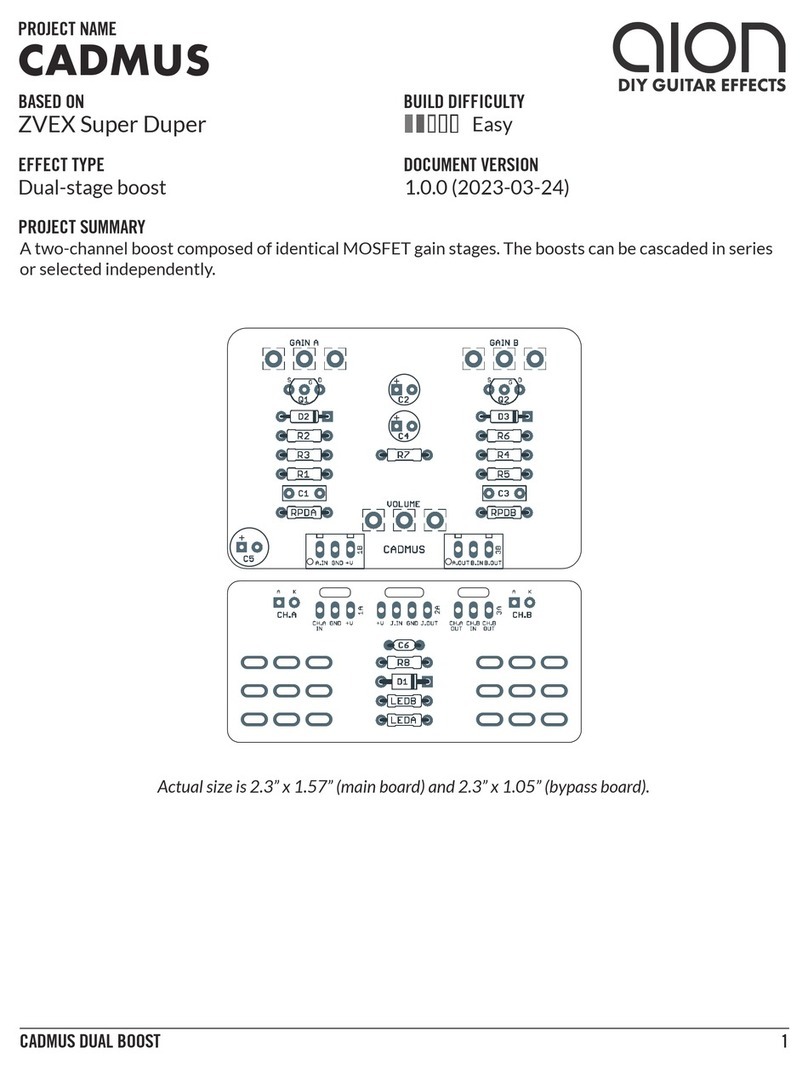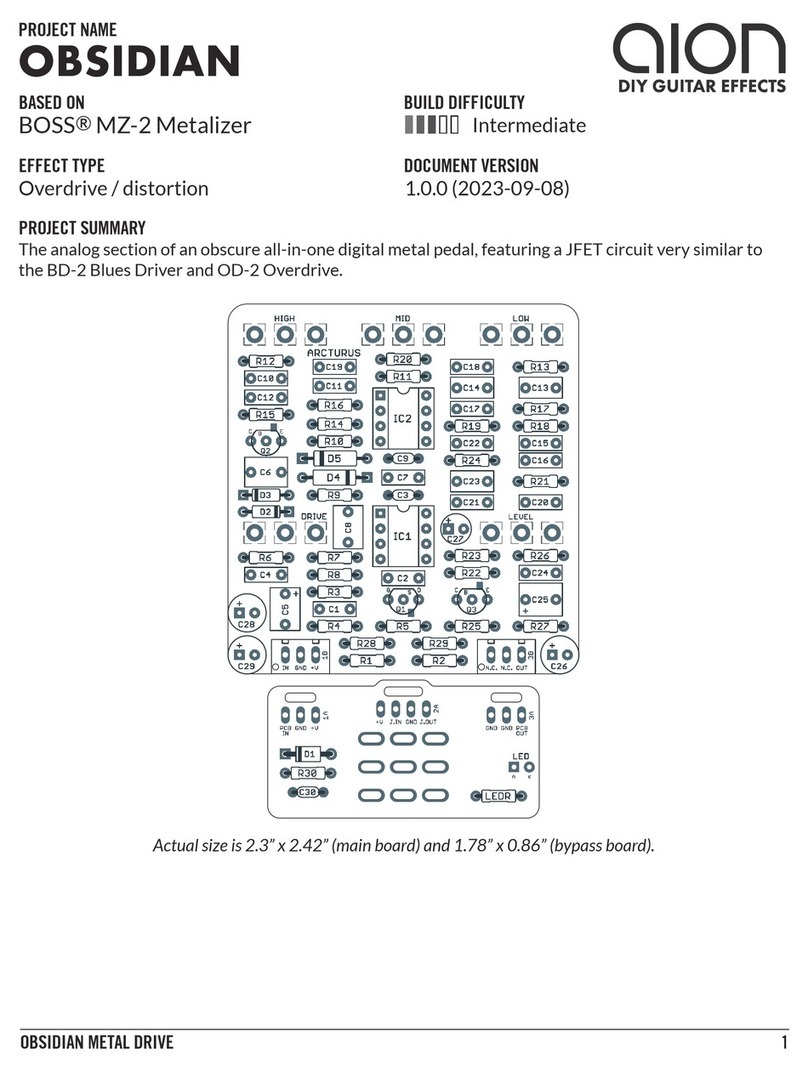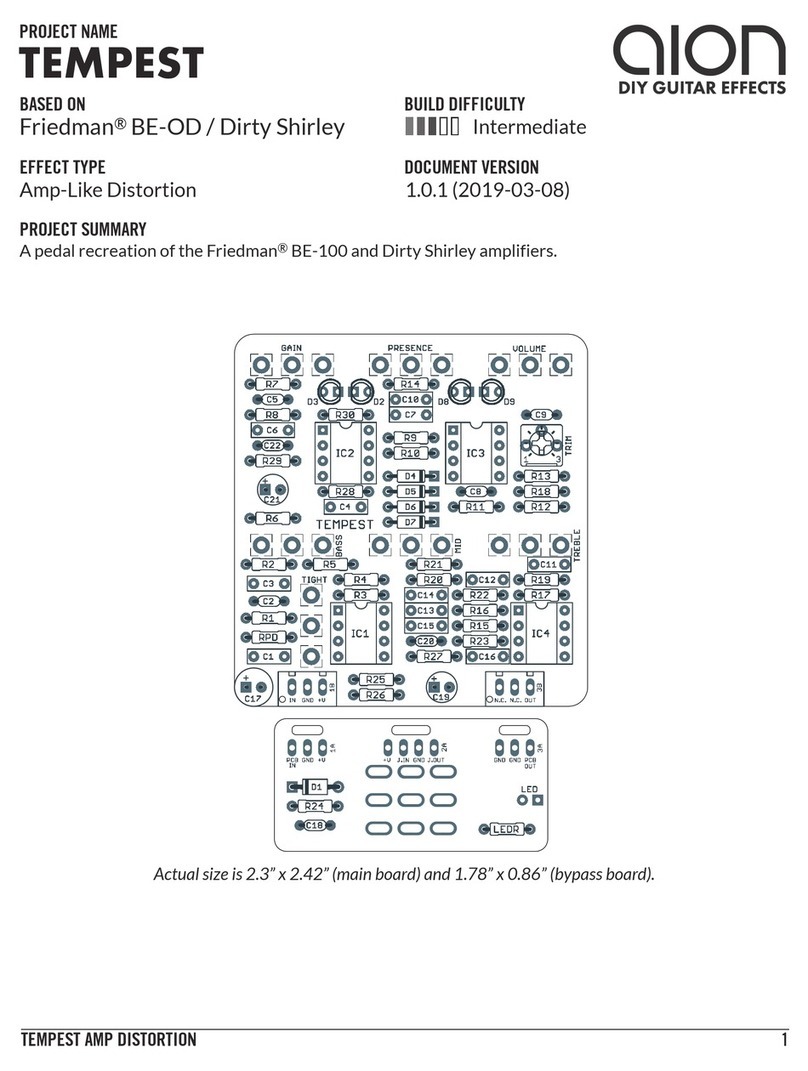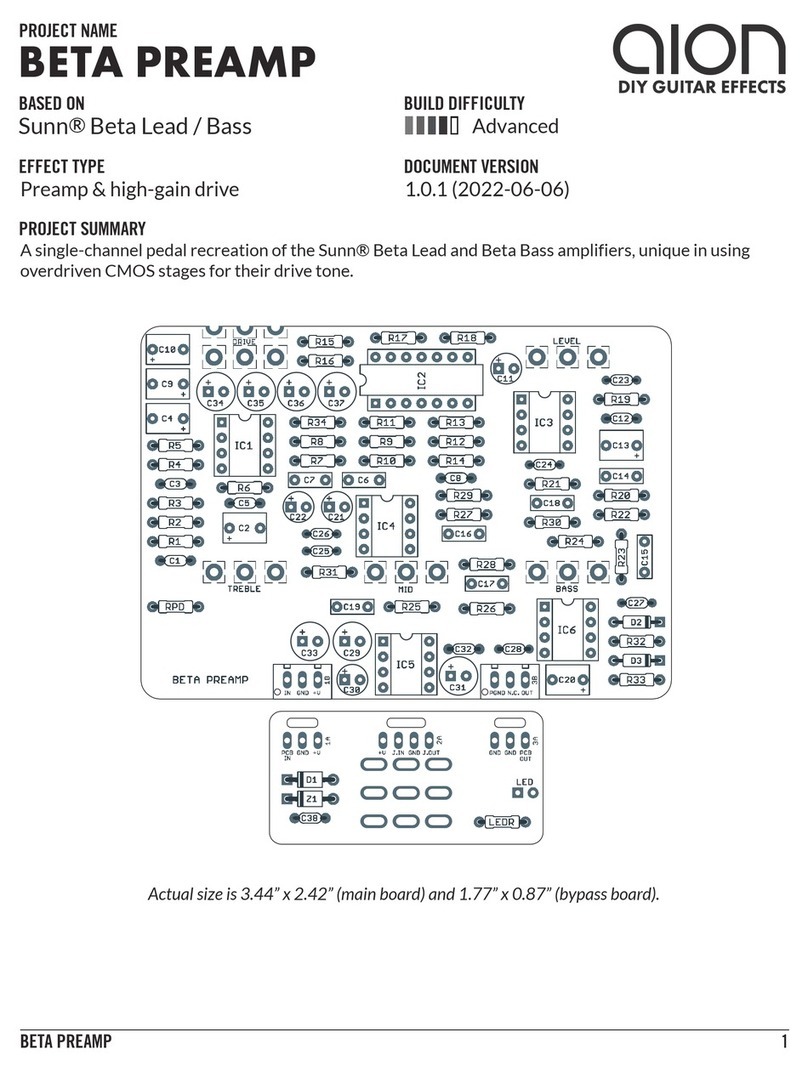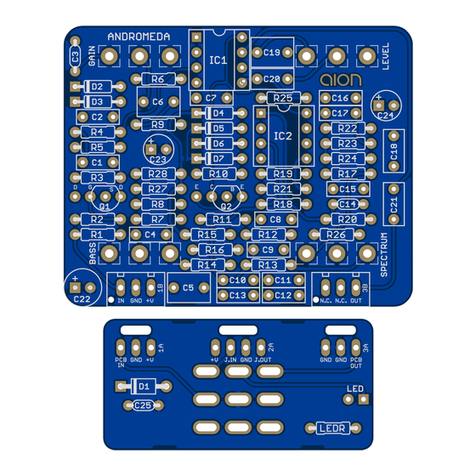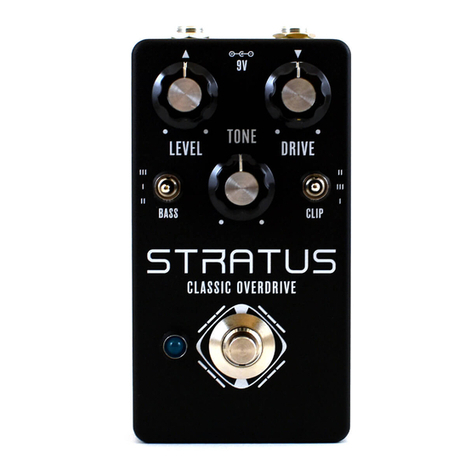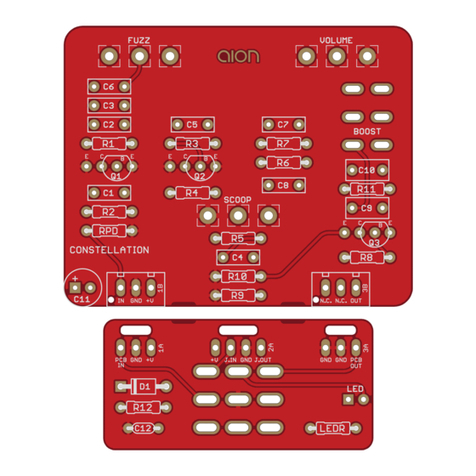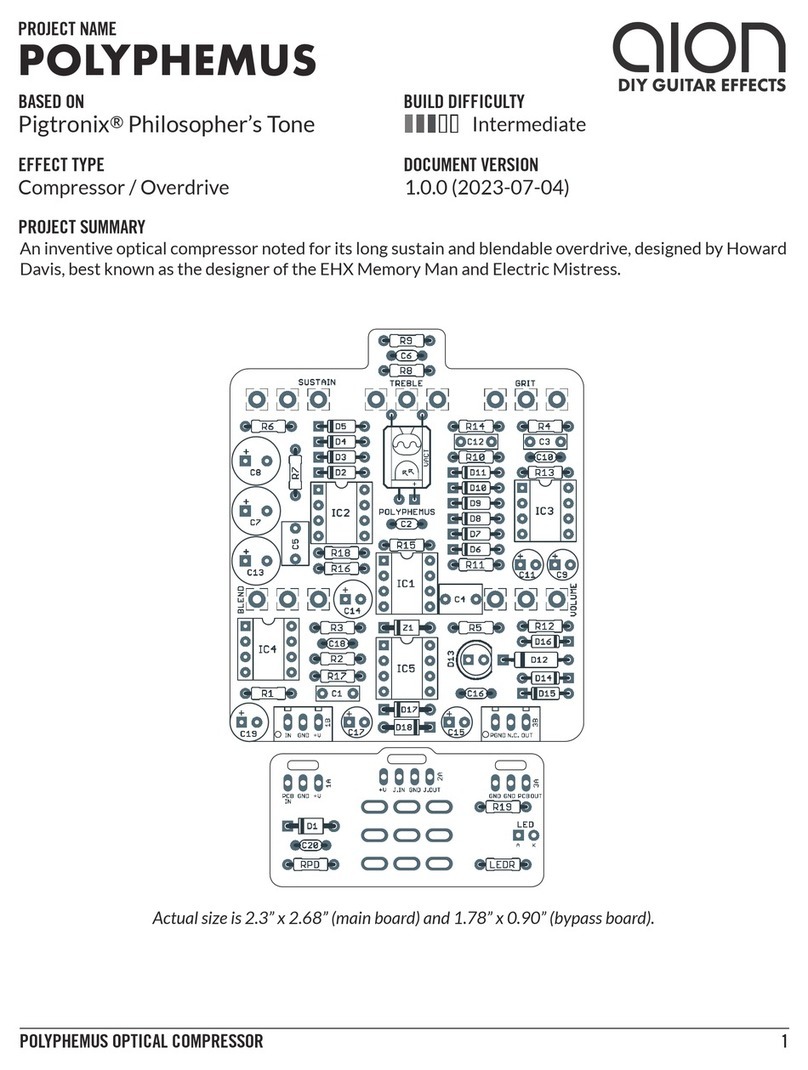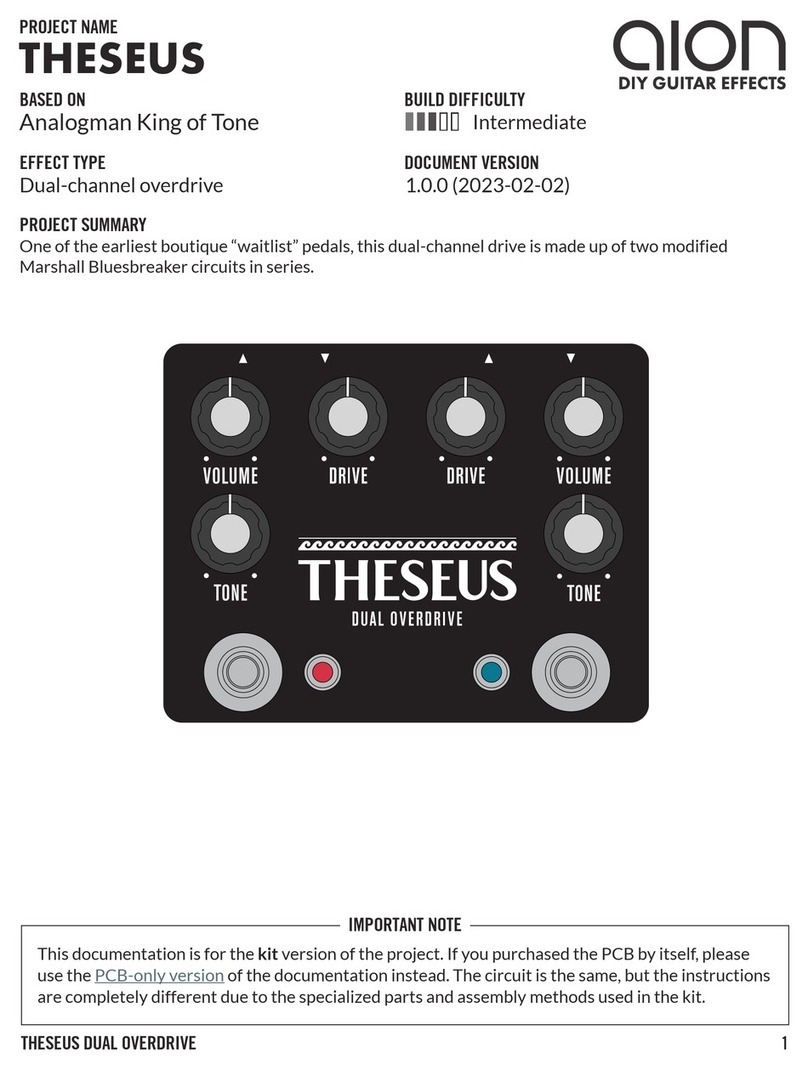
HALO DISTORTION / SUSTAINER 3
PARTS LIST
This parts list is also available in a spreadsheet format which can be imported directly into Mouser for
easy parts ordering. Mouser doesn’t carry all the parts (most notably potentiometers) so the second tab
lists all the non-Mouser parts as well as sources for each.
View parts list spreadsheet →
Note: The parts list is taken from the “Gilmour ‘73 Ram’s Head” version. See the Big Muff Versions
spreadsheet for a compilation of all major versions of the Big Muff with part number references.
PART VALUE TYPE NOTES
R2 33k Metal film resistor, 1/4W
R3 100k Metal film resistor, 1/4W
R4 470k Metal film resistor, 1/4W
R5 100R Metal film resistor, 1/4W
R6 10k Metal film resistor, 1/4W
R7 560R Metal film resistor, 1/4W
R8 10k Metal film resistor, 1/4W
R9 100k Metal film resistor, 1/4W
R10 470k Metal film resistor, 1/4W
R11 100R Metal film resistor, 1/4W
R12 10k Metal film resistor, 1/4W
R13 10k Metal film resistor, 1/4W
R14 100k Metal film resistor, 1/4W
R15 470k Metal film resistor, 1/4W
R16 100R Metal film resistor, 1/4W
R17 10k Metal film resistor, 1/4W
R18 33k Metal film resistor, 1/4W
R19 33k Metal film resistor, 1/4W
R20 470k Metal film resistor, 1/4W
R21 100k Metal film resistor, 1/4W
R22 10k Metal film resistor, 1/4W
R23 2k7 Metal film resistor, 1/4W
R24 100R Metal film resistor, 1/4W Power supply filter resistor.
RPD 2M2 Metal film resistor, 1/4W Input pulldown resistor. Can be as low as 1M.
LEDR 4k7 Metal film resistor, 1/4W LED current-limiting resistor. Adjust value to change LED brightness.
C1 100n Film capacitor, 7.2 x 2.5mm
C2 470pF MLCC capacitor, NP0/C0G
C3 100n Film capacitor, 7.2 x 2.5mm
C4 100n Film capacitor, 7.2 x 2.5mm
